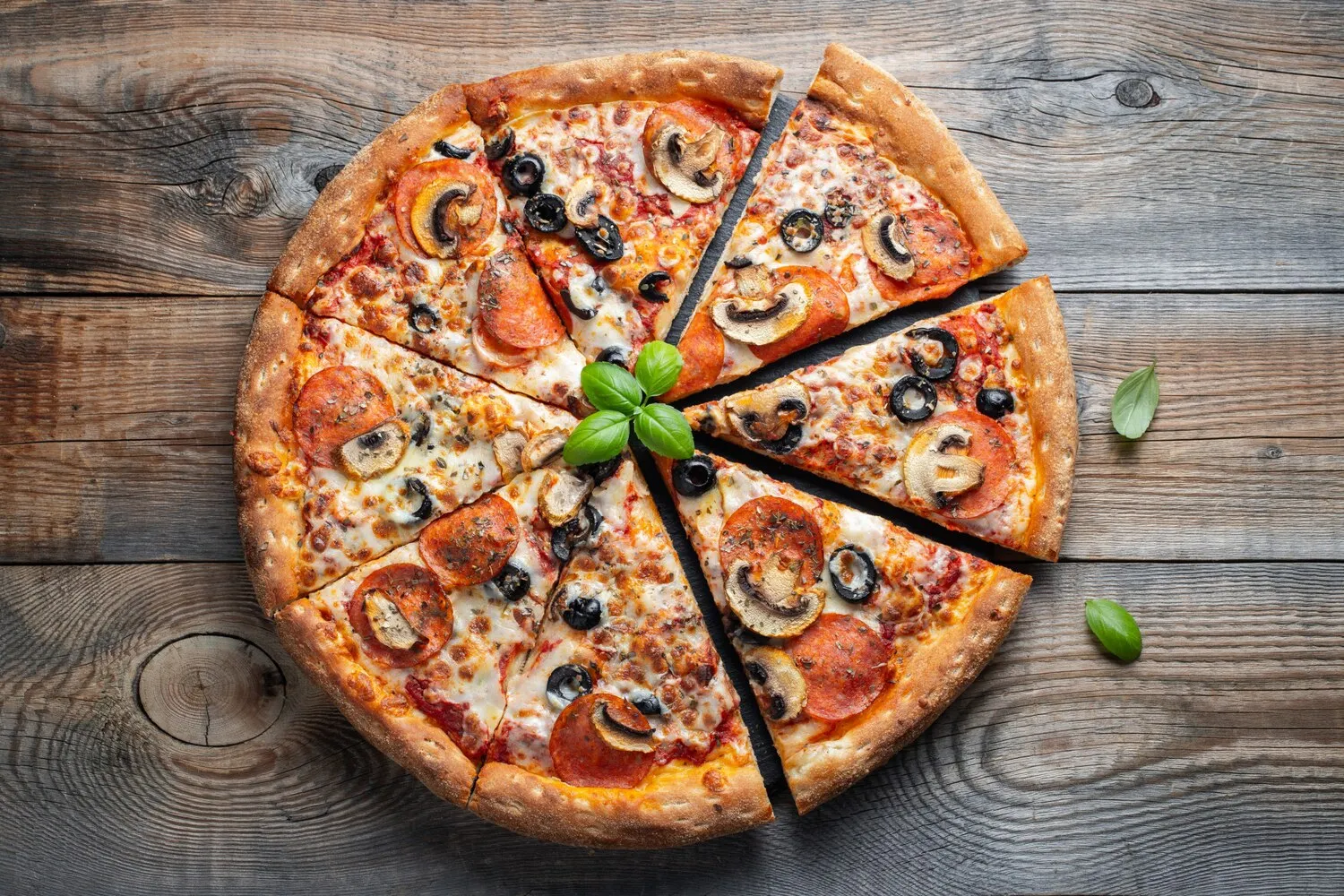
Pizza
Pizza seems to be another common order, according to customer reviews. Again, specific types of pizza aren't consistently detailed in available reviews.
Nutrition Facts
* The % Daily Value (DV) tells you how much a nutrient in a serving of food contributes to a daily diet. 2,000 calories a day is used for general nutrition advice.
Risto Pub Il Macaco Cafè
Pizza's roots can be traced back to ancient civilizations that consumed flatbreads with various toppings. However, the modern pizza as we know it originated in Naples, Italy, in the 18th or early 19th century. It evolved from simple flatbreads sold by street vendors to a more elaborate dish with tomatoes, cheese, and other ingredients.
Pizza is more than just a dish; it's a cultural icon deeply embedded in social gatherings and casual dining. It symbolizes sharing, community, and comfort, often associated with celebrations, family meals, and informal get-togethers.
Social Gathering Staple
Pizza is a common choice for parties, sports events, and casual hangouts, fostering a sense of togetherness and shared enjoyment.
Regional Variations
Different regions have unique pizza styles, reflecting local ingredients and culinary traditions, such as Neapolitan, New York, Chicago deep-dish, and Sicilian styles.
Global Phenomenon
Pizza has transcended its Italian origins to become a globally beloved dish, adapted and reinterpreted in countless ways to suit local tastes and preferences.
Pizza boasts a symphony of flavors, primarily savory and tangy, with variations depending on the toppings. The base flavor profile typically includes the sweetness of tomatoes, the richness of cheese, and the aromatic qualities of herbs like basil and oregano. Meats like pepperoni or sausage contribute savory and spicy notes, while vegetables offer freshness and diverse textures.
The dominant flavors in pizza often come from the interplay between the tomato sauce, which provides a sweet and acidic base, and the cheese, usually mozzarella, which adds richness and a creamy texture. Other cheeses, such as provolone, parmesan, or ricotta, can introduce salty, sharp, or tangy notes. The toppings define the flavor profile, ranging from the spicy and salty pepperoni to the earthy mushrooms or the sweetness of bell peppers. Herbs like basil and oregano add aromatic complexity, while garlic and onions contribute pungent undertones. The crust itself, whether thin and crispy or thick and chewy, also influences the overall flavor and texture.
Quality Ingredients Matter
Using high-quality ingredients, such as fresh tomatoes, real mozzarella cheese, and flavorful olive oil, can significantly improve the taste of your pizza.
Proper Dough Preparation
Allowing the dough to proof properly is crucial for a light and airy crust. Experiment with different types of flour and proofing times to find your preferred texture.
Oven Temperature is Key
A hot oven is essential for achieving a crispy crust and melting the cheese evenly. Ideally, use a pizza stone or baking steel to retain and distribute heat effectively.
Explore additional Pizza dishes and restaurants
Explore PizzaDiscover top dining spots and culinary experiences in Sassari.
Explore SassariLearn more about the food culture, restaurant scene, and culinary heritage of Italy.
Explore Italy